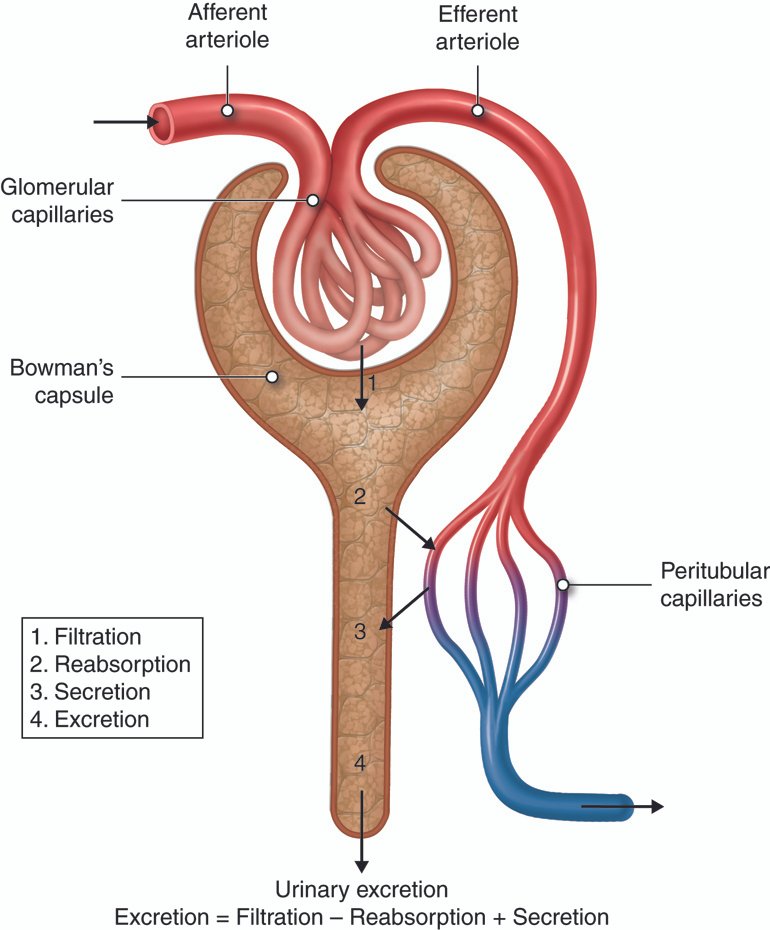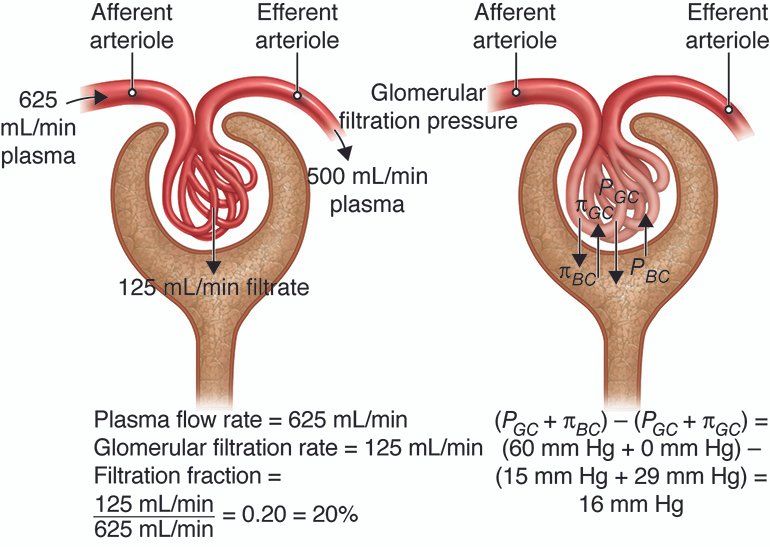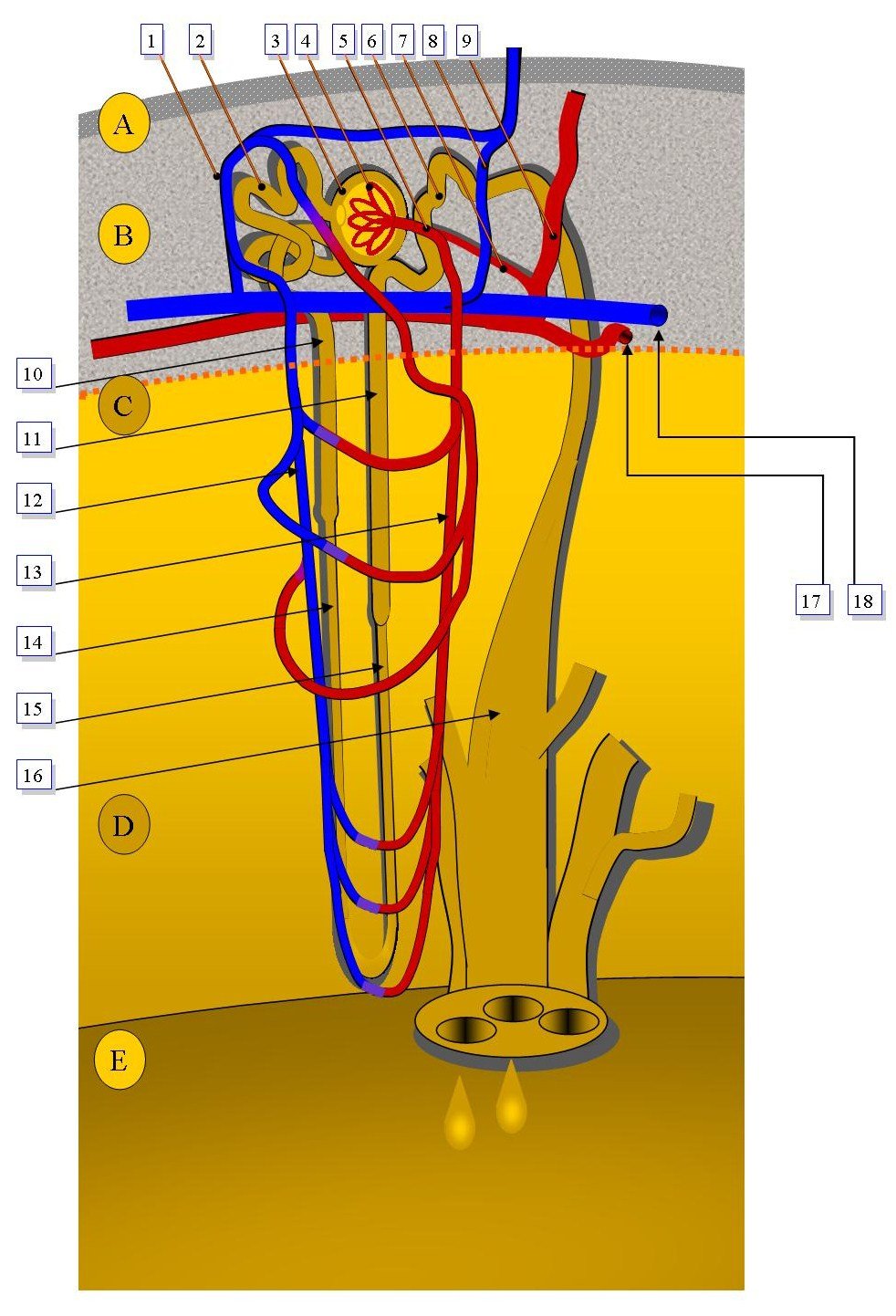Title: Unveiling the Hidden Charms of Urine Formation: A Magical Journey Through Glomerular Filtration
Intro:
Welcome, curious minds, to our enchanting exploration of the mesmerizing process of urine formation. Today, we embark on a captivating journey to unravel the secrets of glomerular filtration, as depicted in the awe-inspiring YouTube video— “The Magic of Urine Formation: Unveiling the Glomerular Filtration Animation.”
Within the mystical confines of our kidneys, a wondrous symphony unfolds. Like master artisans, these humble organs diligently filter our blood, removing waste substances, and balancing water and electrolyte concentrations within our body fluids. The fruit of this labor is the precious nectar we call urine—an excretion that carries the burdens of waste, excess water, and electrolytes out of our bodies, down the noble passageway of the urethra.
Urine formation is a mesmerizing dance, intricately choreographed by three essential phases: glomerular filtration, tubular reabsorption, and tubular secretion. At the ethereal heart of this dance lies the nephron, the kidney’s functional unit. Within this sacred sanctuary, the glomerulus takes center stage—a network of tufted capillaries that orchestrates the initial and crucial step of filtering our life-giving blood.
In a breathtaking ballet of biology, the glomerulus is embraced by delicate, double-walled capsules known as Bowman’s capsules. This ethereal space, aptly named Bowman’s space, cradles the glomerulus and serves as the vessel for the forthcoming marvels.
As the blood gracefully travels through the intricate capillaries of the glomerulus, the magic unfolds. Through the glomerular filtration membrane—a masterpiece composed of three ethereal layers: the valve endothelium, the basement membrane, and the epithelial podocytes—a symphony of particles begins to pass.
However, this divine membrane possesses ethereal discernment; it allows only select particles to traverse its layers, safeguarding the celestial harmony within. The fluid that is filtrated from the capillary blood into Bowman’s space is aptly named “filtrate,” and it serves as the cornerstone for the creation of the primary urine—a magical potion that holds the essence of our body’s delicate balance.
So, dear wanderers of knowledge, join us on this ethereal expedition as we traverse through the captivating realms of glomerular filtration. Prepare to be captivated by the wonders that lie hidden within the layers of the glomerular filtration membrane, and let yourself be mesmerized by the intricate choreography that shapes the very essence of our existence. The magic of urine formation awaits us, beckoning us to unveil its enigmatic beauty. Let’s immerse ourselves in this enchanting journey together.
Heading 1: The Essential Process of Urine Formation: Exploring the Glomerular Filtration Animation
The process of urine formation in the kidneys involves several important steps. One of these steps is glomerular filtration, which is explored through an interactive animation in this section.
During glomerular filtration, the kidneys act as highly efficient filters, removing waste substances from the blood and maintaining proper water and electrolyte concentrations within the body fluids. The end product of this process is urine, which is then excreted from the body through the urethra, carrying with it waste materials, excess water, and excess electrolytes.
The formation of urine involves three main processes: glomerular filtration, tubular reabsorption, and tubular secretion. At the beginning of the nephron, which is the functional unit of the kidneys, there is a network tuft of capillaries called the glomerulus. This glomerulus is enclosed within thin double-walled capsules known as Bowman’s capsules. The space inside the capsule, surrounding the glomerulus, is referred to as Bowman’s space.
As blood flows through the capillaries of the glomerulus, filtration occurs, causing plasma contents to spill out into Bowman’s space through the glomerular filtration membrane. This membrane consists of three layers: the capillary endothelium, the basement membrane, and the epithelial podocytes. While this membrane allows some particles of blood to pass through, it does not allow all substances to pass. The fluid that is filtered from the capillary blood into Bowman’s space is called filtrate and forms the primary urine.
Through the glomerular filtration animation, viewers can gain a better understanding of how the kidneys perform the essential process of urine formation. This interactive feature helps to visualize the complex mechanisms involved in glomerular filtration, providing a holistic view of this vital physiological process. With the animation, users are able to explore the intricate structures and functions of the kidneys, deepening their knowledge of how the body regulates water and waste in order to maintain proper bodily functions.
Heading 2: Anatomy of the Kidneys: Understanding the Glomerulus and Bowman’s Capsule
The anatomy of the kidneys plays a crucial role in understanding the glomerulus and Bowman’s capsule. The kidneys, being shaped organs, have the important function of filtering blood and removing waste substances from it. Additionally, they regulate the concentrations of water and electrolytes in the body fluids. As a result of this filtration process, urine is formed, which contains waste material, excess water, and excess electrolytes. The urine is then excreted from the body through the urethra.
Urine formation involves several processes, including glomerular filtration, tubular reabsorption, and tubular secretion. At the beginning of the nephron, the functional unit of the kidneys, the glomerulus comes into play. The glomerulus is a network tuft of capillaries that performs the initial step of filtering the blood. Surrounding the glomerulus, there are thin double-walled capsules called Bowman’s capsules. The space inside the capsule and surrounding the glomerulus is referred to as Bowman’s space.
As the blood travels through the capillaries of the glomerulus, glomerular filtration occurs, causing various components of the plasma to spill out into Bowman’s space through the glomerular filtration membrane. This membrane consists of three layers: the capillary valve endothelium, the basement membrane, and the epithelial podocytes. It allows certain particles of blood to pass through while retaining others. The fluid that is filtered from the capillary blood into Bowman’s space is known as filtrate and forms the primary urine. The anatomy of the kidneys, particularly the glomerulus and Bowman’s capsule, provides a fundamental understanding of urine formation and the intricate filtration processes involved.
Heading 3: The Glomerular Filtration Membrane: Secrets to Efficient Filtration
The glomerular filtration membrane is a vital component in the efficient filtration process of the kidneys. It plays a crucial role in removing waste substances from the blood and regulating water and electrolyte concentrations within the body fluids. This filtration process ultimately results in the formation of urine, which is then excreted outside of the body through the urethra, containing waste, excess water, and excess electrolytes.
Urine formation involves three key processes: glomerular filtration, tubular reabsorption, and tubular secretion. At the beginning of the nephron, the functional unit of the kidneys, lies the glomerulus. The glomerulus is a network tuft of capillaries responsible for the first step of blood filtration. It is encased in thin double-walled capsules called Bowman’s capsules, and the space inside this capsule, surrounding the glomerulus, is known as Bowman’s space.
The glomerular filtration membrane, consisting of three layers of capillary – the valve endothelium, the basement membrane, and the epithelial podocytes, is what allows the filtration of blood particles into Bowman’s space. However, it does not permit the passage of all fluid. The fluid that filters from the capillary blood into the Bowman’s space is called filtrate, which then forms the primary urine. Through the intricate workings of the glomerular filtration membrane, efficient filtration is achieved, providing an essential function in maintaining the body’s fluid and electrolyte balance.
Heading 4: From Filtrate to Urine: Nephrons’ Role in Completing Urine Formation
In the intricate process of urine formation, the kidneys play a vital role in filtering the blood and maintaining the balance of water and electrolytes within our body fluids. This crucial function is carried out by specialized structures known as nephrons. At the core of each nephron lies the glomerulus, which acts as a network of finely intertwined capillaries involved in the initial step of filtering the blood.
To facilitate this filtration process, the glomerulus is encapsulated within thin double-walled containers called Bowman’s capsule. Surrounding the glomerulus, there exists a space known as Bowman’s space. As the blood courses through the glomerular capillaries, an intricate filtration mechanism takes place, causing essential components of plasma to pass into Bowman’s space. This filtration membrane is composed of three layers: the valve endothelium, basement membrane, and epithelial podocytes. It selectively permits certain particles of blood to pass through, while retaining others.
As a result of this filtration process, the fluid that is separated from the capillary blood and enters Bowman’s space is known as filtrate. The filtrate represents the primary urine, and it comprises waste substances, excess water, and excess electrolytes. This initial stage, known as glomerular filtration, sets the foundation for subsequent steps in urine formation, including tubular reabsorption and tubular secretion. Together, these processes ensure that the final product, urine, effectively removes harmful waste substances from our bodies and plays a crucial role in maintaining overall bodily functions.
Key Takeaways
In conclusion, the YouTube video “The Magic of Urine Formation: Unveiling the Glomerular Filtration Animation” provides a captivating insight into the intricate process of urine formation in the kidneys. Through glomerular filtration, the blood is filtered to remove waste substances and maintain the balance of water and electrolytes within the body fluids. This remarkable process ultimately leads to the production of urine, which is excreted outside of the body through the urethra.
The video delves into the three key stages of urine formation: glomerular filtration, tubular reabsorption, and tubular secretion. The glomerulus, a network tuft of capillaries, takes center stage in the initial step of filtering the blood. It accomplishes this through thin double-walled capsules called Bowman’s capsules, which surround the glomerulus, creating Bowman’s space. As the blood traverses these capillaries, the filtration process allows plasma contents to spill out into Bowman’s space via the glomerular filtration membrane.
The membrane, composed of three layers of capillary valve endothelium, basement membrane, and epithelial podocytes, selectively permits certain particles to pass through while retaining others. The filtered fluid, known as filtrate, becomes the primary urine.
This mesmerizing animation sheds light on the intricate mechanisms at play within the nephron, the kidneys’ functional unit. By revealing the magic of urine formation, it educates viewers on the vital role the kidneys play in waste elimination and fluid balance regulation.
In conclusion, “The Magic of Urine Formation: Unveiling the Glomerular Filtration Animation” invites us to appreciate the complexity and precision of the human body’s processes. It serves as a testament to the beauty and functionality of our organs and reinforces the importance of maintaining their health and well-being.